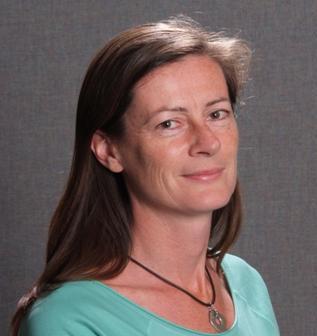In Bristol’s European Green Capital year, the University of Bristol and its Cabot Institute have been working with the Bristol Green Capital Partnership and its members to convene a series of four conversations between Bristol academics and city ‘thinkers’ from across public, private and civil society exploring how Bristol delivers the ‘future city’ – what capacities it needs to be resilient, sustainable and successful and how it can start to develop these in times of changing governance and tightened finances. The conversations will be reflected in a series of four blogs (the second below) and then brought together as a policy report for the Festival of the Future City in November. You can read other blogs from this series at the bottom of this blog.
——————————————–
The University of Bristol and the Green Capital Partnership have convened a series of conversations between Bristol academics and city ‘thinkers’ to discuss Bristol’s capacities as a future city. The second of our conversations discussed ‘austerity and service delivery’, building on the ideas emerging from the first workshop which was on governance. ‘Austerity’ impacts on the public sector and the city in many ways and it impacts unevenly on different places, sectors and social groups. It can also be used as a (short term) excuse for sidelining environmental obligations – resulting in even greater problems further into the future. It was interesting to see, in the Netherlands recently, civil society taking their government to court to demand stronger carbon cutting targets despite tight finances. The court ordered the government to cut emissions by 25% within five years rather than the planned 14-17% in order to protect citizens from climate change. What could a city like Bristol do to lead the way in challenging government?
Below are some of the ideas and thoughts emerging from our big conversation on austerity.
 |
| Words that came out of our conversation on austerity. |
Our debate questioned how much of what we are seeing in austerity is really about political values and choosing not to spend money that is there or to spend it in a particular way. In the current political climate, arguably the poorest feel the effects disproportionately, exacerbating inequalities that already exist. So is austerity necessary? If we’ve been living beyond our means then something needs to change, but maybe it’s something fundamental about the system rather than under-resourcing a flawed system and hoping to manage. It was suggested that we need to ‘hospice out the old system and birth in a new one’, questioning the assumptions that underpin the apparent need for austerity and creating different narratives and cultural norms.
Whatever we think about the austerity agenda, there is a need to survive and be resilient in the face of it and to find ways of looking after the poorest communities so that they don’t suffer even more. Solutions are starting to emerge at a local level but, as one participant said, “we can’t forget the underpinning politics; we can’t let these solutions be escape clauses for the politics that are creating bad situations”. So alternative solutions should be pursued in a way that recognises that they can be empowering, whilst also acknowledging that they are less ideal alternatives to a non-austerity agenda.
Public sector
In the public sector, many would argue that much of the scope for efficiency gains has already been used up. The further cuts that seem likely will impact not only on the ways in which the public sector provides public services but also on whether it provides some services at all. It is under enormous pressure to maintain services despite increasingly constrained resources and staff are feeling the strain. What is the opportunity to do things differently? In some places, the ideas of ‘entrepreneurial municipalism’ and ‘municipal entrepreneurialism’ are gaining traction. How can the council be more entrepreneurial, and how can the entrepreneurs in the city be enabled to provide municipal wellbeing (services to support the wellbeing of citizens in the city) in different forms? Or how do these come together – the public sector being more entrepreneurial, the private and civic sectors being more municipal?
Bristol City Council was criticized in some areas for taking a monolithic and closed approach and for not sharing and using the expertise that exists in the city to everyone’s benefit. It was suggested that a collaborative, open and co-produced approach might have more and wider support. By contrast, in other areas as we observed in our last debate, it has maintained a hands-off approach which has allowed external innovation to flourish.
 |
| Taken from parliament.uk |
The impacts of recent changes to the benefits system (such as capping benefits, restricting who can access them and delaying payment) were described as devastating, especially on families and young people. New ways of distributing benefits and other services which rely on digital access also impacts on those who need them most. A particular problem is in housing where private rents are rising and the caps on social rents will result in substantial deficits and a reduced ability to build more stock just at a time when, with new rights to buy, there needs to be more investment from both local authorities and housing associations.
Beneficial ‘collaboration’ with austerity
How do we collaborate in or co-opt the austerity agenda without colluding in it? In other words, how can we make the best of something that will happen without saying that we accept the need for it? Austerity might force new ways of doing things and if we grasp the challenge we might actually discover something new and better in the process by questioning some of the old systems and assumptions about how and by whom services are provided. In this way, a new and better system might be created in spite of the government, rather than because of it.
Communities and organisations across the country are seeking to solve the problems caused by austerity and there are many examples where a really exciting idea develops in a particular place and time. We need to both learn quickly enough to enable those successes to carry on, but also to identify why they happen and how they can be transplanted, nurtured and scaled up and out into other areas, creating something that’s bigger than the sum of its parts. Potentially this is “playing to a Conservative agenda around self-reliance”, but if we change the language to make it more about community empowerment and reconfiguring to bring all the assets that we’ve got in the city together in new ways, it feels much more positive. This is important not just for people who are desperate now but in order to construct a new vision and build capacity for future resilience:
“So much is not exclusive between surviving the space we’re in and articulating a new narrative and a new way of thinking and working.”
Power, short termism and rethinking
But first, there is a need to better understand the current direction of travel and powers held by different players in the city in order to gain clarity over what will happen if we just continue on the present path. What social and environmental services will be lost and with what results? Once those implications are clear, a new vision can take form, one that reflects what is needed for the long term and not just to solve immediate problems, a vision that says ‘what do we do about this in a more proactive way?’ Some of the cuts made now will be false economies, a short term approach leaving bigger problems to solve in the long term. It was suggested that the impacts of the Thatcher government in ‘decimating’ the North of England took perhaps 30 years to regenerate and create a new future for those communities.
This agenda could be an opportunity to rethink ‘prosperity’ and to challenge the GDP growth paradigm to bring long term planetary and social justice benefits. We can see in so many ways that the current economic system isn’t working, so what are the opportunities for change? In the past, ambitions to get people to consume less have failed where people have resisted any infringing on their personal freedoms but, in the interests of their own communities and if, as one participant contributed, it is framed as a way of avoiding ‘stuffocation’ to lead more fulfilled lives, could it be better received?
Who has the power in the city or neighbourhood to make changes, who can authorize something being done differently? At a local level, are there low hanging fruit that could be grasped to start making smaller changes leading to bigger new systems in the long term? Is this the ‘big disruption’ that we need to force beneficial change to a more sustainable future?
Mechanisms
What are the mechanisms available to make changes? For example how can we raise financing locally? At the moment, we have little control or revenue raising powers locally because of the centralised way that budgets are controlled. But there are opportunities such as the Social Value Act which could be used to benefit local communities through the supply chain. Or are there ways to harness the resources of the businesses in the city to deliver social benefit? It is in their interest to invest in a more equal, cohesive city where their employees will want to live and where they can do business.
There could also be a role for the major institutions in the city too – for example the NHS through the Bristol Royal Infirmary and Southmead complexes account for about 10% of all travel in the city through staff, patients and visitors. It also has a civic function in addressing the ‘wellness’ of its patients and citizens more widely – developing links with communities to address chronic health problems – but can we / should we seek to change the rules on health spending to address causes before they become illnesses and if so, how do we account for the lag that will result whilst historical ill health works its way through the system? What is within local powers and what should be if we want to take a longer term view?
 |
| One of the car parks at Southmead Hospital (6763761). Image taken from Gazetteseries.co.uk |
Devolution is also an opportunity – can the power to raise finance for particular things be devolved? Could we manage NHS spending locally, allowing a more holistic view to be taken? Or does devolution just mean that the same decisions will be taken at a more local level? Although Bristol’s politics is left-leaning, the surrounding areas are blue and more likely to reflect the politics and values of central government.
Another way, within the city, is for all employers to commit to the living wage or to have a city that was “proud to have a maximum wage”, with voluntary contributions to a city-wide fund.
Where to now?
Our austerity debate talked about ‘solidarity’ across the city and collaborating or co-opting rather than colluding in an austerity agenda to get the least worst outcome. The phrase ‘being ahead of the curve’ came up but it needs to be the right curve or we need to ‘create a different curve’ or new system. Communities are developing resilience through new partnerships and new ways of doing things, sharing their experiences and learning, to start to develop a new narrative and a more equitable, sustainable and resilient locally owned system. These new partnerships are reframing the debates; for example to tackle transport issues through reducing obesity, tackling air pollution and changing the way people think about moving around the city. Universities have a role too in supporting the sharing of learning and new systems, finding good examples from elsewhere and producing collaborative research into what works and why.
 |
| Caroline Bird |
Blog 1: Delivering the ‘Future City’: does Bristol have the governance capacities it needs?







.jpg)





